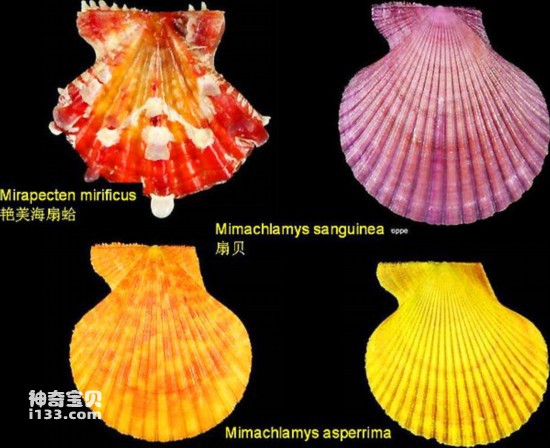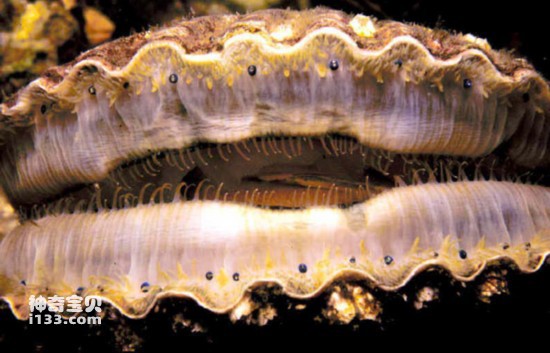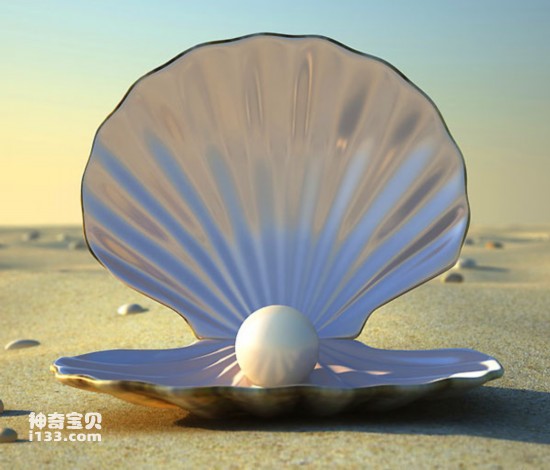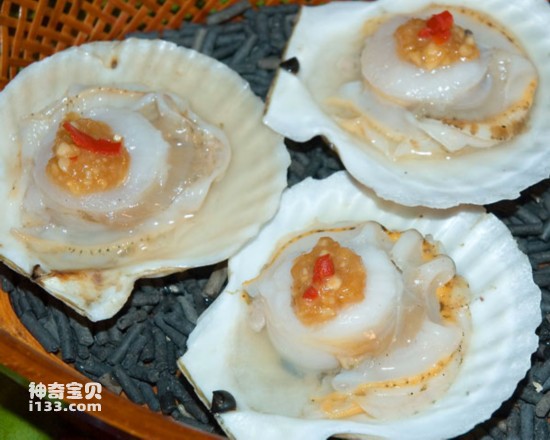Scallop is the name for the bivalve mollusk of the genus Scallopus, with about 400 species. It belongs to the bivalve molluscs, order Bivalvia, and lives attached to shallow sea rocks or sandy seabed. There are many varieties of scallops, found in oceans all over the world. Many scallops are eaten as a delicacy. Scallops with bright colors and radiating patterns are loved by collectors, and the patterns have been adopted as patterns for artworks.

Scallop types
Recently, a scallop that was so frightened that it ran as fast as possible shocked netizens. Most of the shellfish we see in our lives are extremely quiet. If it weren't for the pictures and facts about this scallop that opened its shell and ran wildly, I'm afraid many netizens would never have seen such a lively and joyful side of the scallop.

running scallop
The scallop is indeed extremely quiet most of the time. In an ocean with rich biological species, it is timid and fearful. If it is not eating, it rarely opens the protective shell it relies on to survive. Its eating method and food are also very passive - scallops are filter feeders and have the ability to select the size of food, but not the type. Food of the right size is carried into the mouth with the swing of the cilia, while unsuitable particles are expelled from the body through the abdominal groove of the feet. Its food intake is related to the water filtering speed. The water filtering speed is the lowest at 1 to 3 o'clock at night, so its food intake is the largest at night. The main food of scallops is organic detritus, micro-particles suspended in seawater and plankton, such as diatoms, dinoflagellates, copepods, etc., followed by algae spores, bacteria, etc. The composition of their food types is related to that in the environment. The type is consistent.

shell mouth
However, even when eating, this thing only opens its shell slightly - it eats through filtering, that is, it first inhales water and food in the ocean, and then spits out the water. The process of eating is a complete process. Zhang Yihe. The running scallop that has become popular recently must have been frightened to open its shell frequently and to such a large extent - scallops, like mussels and pearl oysters, also use byssus to attach themselves to rocks or sand in shallow seas Those that live on the bottom of the sea generally have their right shell at the bottom and left shell at the top, laying flat on the bottom of the sea. It does not move much at ordinary times, but when it feels that the environment is not suitable, it can take the initiative to take off its byssus and swim in a smaller range. Especially young scallops use their shells to quickly open and close to drain water and swim very fast. Their swimming method is also very interesting: the double shells flap intermittently, spray out water, and use its reaction force to push the body forward. This kind of "running" "The method is relatively special among bivalve molluscs.
How do scallops get frightened? In fact, in addition to being stimulated by changes in the surrounding environment, scallops can see approaching danger on their own - there are up to 100 simple "eyes" on the edge of the scallop shell, like a string of beads. They are reflex eyes, each about a millimeter in diameter, and their retinas are more complex than those of other bivalve species. Their eyes contain two types of retinas, one adapted to light and the other adapted to dark objects, such as the shadow of a nearby predator. They cannot sense the shape of objects, but they can detect changing light and motion.

scallop eyes
So who was most likely to frighten this scallop that opened its shell and ran wildly? The answer is starfish - starfish are the main natural enemy of scallops. It will surround it with its arm legs, adsorb it with its tube feet, pull open the scallop's shell, and turn its stomach out to digest the soft flesh inside the shell.

shell pearls
Some netizens ridiculed this running scallop: "I always thought that scallops are creatures that just sit quietly on the sea floor and rub pearls every day, until I discovered today that once they are frightened... this thing can run faster than anyone else! Shells The swimming posture is very joyful, isn’t it?”

Yes, scallops do stay quietly on the seabed for a long time every day. But most scallops are not good at pearl rubbing. There are about 60 kinds of food around the world that are processed and eaten as delicacies. If scallops are rich in pearls, diners will eat the pearls without paying attention, and the consequences will be unimaginable!
Therefore, in fact, most of the scallops just spit bubbles and filter feed on the seabed, living their small lives. Once they are frightened, they can become athletes in a second!
animal tags:
We created this article in conjunction with AI technology, then made sure it was fact-checked and edited by a Animals Top editor.